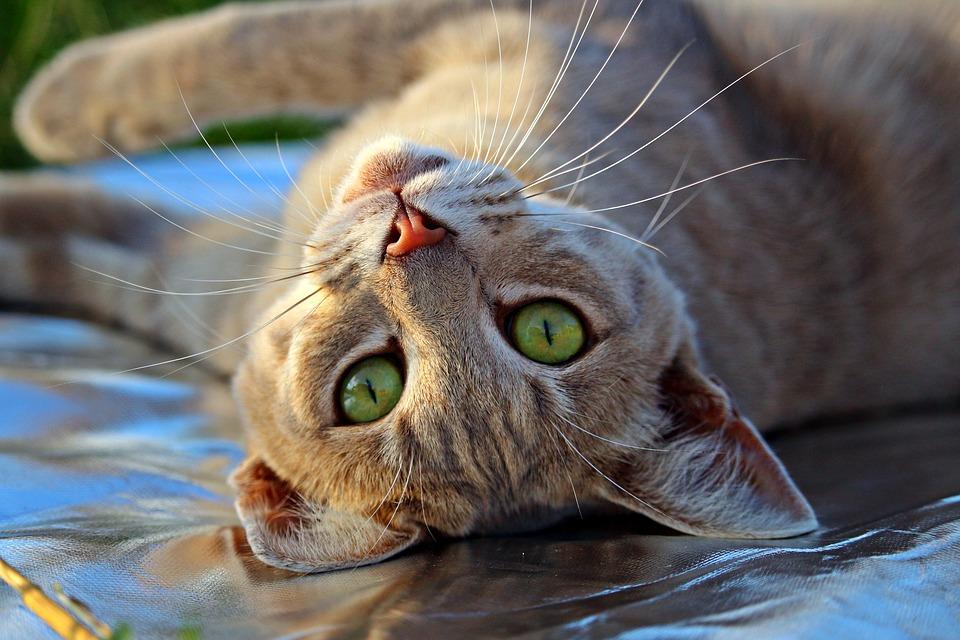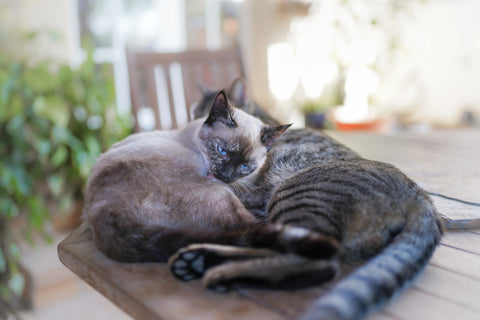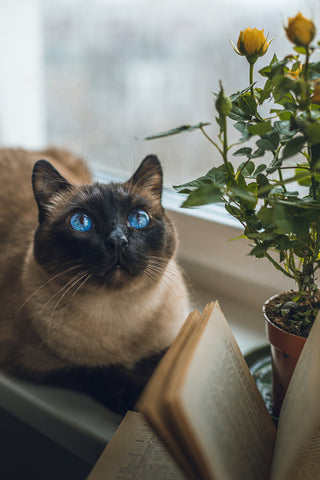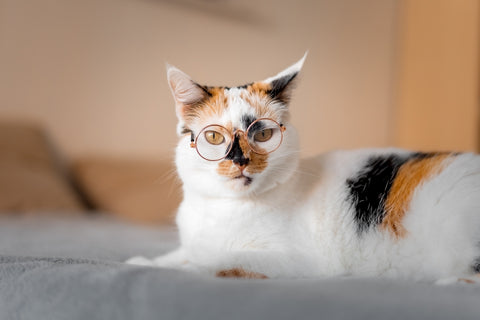
Notorious for their perfectionism, cats spend large portions of their time grooming and polishing. Their impeccable coats, however, can sometimes hide various skin problems and irritations that need our attention. Here are seven groups of the most commonly observed skin problems in cats.
With the qualities of cleanliness, discretion, affection, patience, dignity and courage that cats have, how many of us, I ask you, would be capable of being cats?" - Fernand Mery.
1. Skin infections
Most skin infections in cats are either bacterial or fungal. In many cases, the bacterial infections in cats are secondary conditions. This means that they occur as a result of another skin problem. For example, excessive itching and grooming due to parasites can cause skin traumas which allow the bacteria to inhabit and create a secondary infection. In order to treat a bacterial skin infection, it is crucial to identify and address the primary condition first. Then, if necessary, the infection can be treated with antibiotics.
The fungal skin infections are caused by fungi and cats with weakened immune systems (i.e. due to other medical problems) are generally at a higher risk from them. Two common fungi among cats are yeast and ringworm. Yeast frequently affects feline ears and the symptoms usually include discharge (often yellow or black), redness of the ear flaps and excessive ear scratching or head shaking. Yeast can be successfully treated with antifungal medicine.
Ringworm is a different type of a fungus which causes small, circular lesions on the cat's head, ears and body. The skin around these lesions appears bald and flaky. Ringworm is highly contagious and can spread to other pets and people. The treatment depends on the severity of the infection, but typically involves specifically designed shampoos, creams and/or oral medications.
 Skin problems in cats
Skin problems in cats
Another fungus causing infection in cats is sporotrichosis. Although rare, this fungus considered to be a public health concern because it can spread from cats to humans. This is why affected cats have to be treated promptly. The fungus causes hard skin lesions that may leak fluid. People with weakened immune systems are particularly sensitive to it.
2. Skin allergies
Feline immune system fights off harmful substances (bacteria and viruses) with antibodies and in this way protects its host from the enemies. But sometimes, just like in humans, a cat’s immune system can be overly sensitive and mistake completely harmless proteins for dangerous substances. This is when your kitty will develop an allergic reaction. Cats typically experience their allergies in the form of atopic dermatitis rather than runny noses and watering eyes.
You may notice red spots or rashes on the skin (primarily bellies, nose and paws), reddened eyes and even a reddened anus. The affected cats will also itch – A LOT. Common allergens are food, pollen, fleas, diverse household allergens, plastic bowls, perfumes and different drugs. Please read our article about cat allergies for more on this topic.
3. Parasites
Cats are under the threat from numerous different parasites. The most common struggle in cats are the fleas, ear mites and lice.
 Skin problems in cats
Skin problems in cats
Fleas are small, parasitic insects which feed on the host's blood. Most common flea species found in pets are cat flea (lat. Ctenocephalides felis) and dog flea (lat. Ctenocephalides canis). The principle host of the cat flea are cats, but they can also be found on dogs. Flea infestations are very common among both cats and dogs. The signs include the presence of the fleas or their droppings in the fur, excessive scratching, crusty skin lesions or hair thinning (particularly above the base of the tail).
Flea's life cycle includes four stages: egg, larva, pupa and adult. Flea populations are distributed with about 50% eggs, 35% larvae, 10% pupae, and 5% adults (Crosby, 2018). Because flea spend about three quarters of their life other than on the cat, the treatment of flea infestation includes the treatment of the host as well as the environment. The cats are treated with topical treatments.
All the furniture, beddings and rugs your cat had access to also need to be thoroughly vacuumed, washed in hot water and, if needed, treated with special treatments. The gold standard for flea control is regular flea prevention protocol applied to all pets in the family.

Cat flea (lat. Ctenocephalides felis)
Ear mites are small parasitic arthropods, inhabiting the ears animals and humans. The species responsible for 90% of ear mite infections in cats is Otodectes cynotis. The signs of the infection are excessive scratching, head shaking, dark discharge from the ears and strong odor. Sever cases can be painful and with white puss. Ear mites are usually treated with specifically designed ear drops.
Lice (louse for singular), are obligatory parasites living on warm-blooded hosts (affects most species of birds and mammals). So far, nearly 5000 species of louse have been identified, of which 4000 are parasitic on birds and 800 on mammals. Lice are species-specific and do not spread from one species to the other.
This means that human lice affect only humans, and cat lice affect only cats. The most common louse species in cats is Felicola subrostratus. Unlike fleas, lice feed on dry skin and are typically found on young and neglected felines. Stretching, unusual coat appearance and hair loss are typical signs. There are numerous topical effective treatments against feline lice.
4. Alopecia
Alopecia is a term used for abnormal hair loss, distinct from healthy shedding (i.e. seasonal shedding). The hair loss can be caused by different factors and conditions such as allergies, hormonal disbalances, immune system problems, parasites, fungal infections, diabetes, cancer or others.
Although rarely, alopecia can be genetically determined as well. For example, some cat breeds, like Himalayans and Bengals, possess genes that cause hair loss in their gene pool. Others, like the Sphynx, are bred to be hairless.
 Skin problems in cats
Skin problems in cats
A distinct type of alopecia is psychogenic alopecia. This is the condition in which the hair loss is caused by cat's compulsive self-grooming. Such behavior is often caused by stress and anxiety. The treatment involves environmental adaptations which will reduce the stressors and one-on-one activities which will redirect the cat's energy. In some cases, feline pheromone diffusers and/or anti-anxiety medications can be prescribed too.
5. Feline acne
Feline acne typically appear as comedones on the chin and at the edges of the cat's lips. Acne in cats are most commonly caused by food dishes. Although harmless, in severe cases, they can be treated with special shampoos and dietary adaptations.
6. Sunburn
Hairless cats and cats with light-colored fur are highly sensitive to sun. It's recommended to limit the exposure to direct sunlight for such cats in order to prevent sunburns and minimize long-term skin cancer risks.
7. Skin tumors
Lumps on feline skins are often harmless, but should always be checked by a veterinarian nonetheless. If the vet suspects of tumor, biopsies are performed to confirm the diagnosis. In cases of benign tumors and tumors that have not spread, lump removal may be the only treatment needed.

Although cats tend to take impeccable care of their coat, there are numerous skin problems and diseases we need to be on the lookout for. Cats need to be groomed regularly (on daily, or at least, weekly basis). Regular grooming will help get rid of the dead hair and cells, it will help tone your cat's muscles and it will allow you to monitor the condition of their hair and skin.
Do you have any useful tips on how to get your cat used to grooming? Share with the rest of the Basepaws community on Facebook, Instagram or Twitter!
Further reading:
1. Skin Problems to Watch For in Your Cat by Hill's
2. Skin Problems in Cats by WebMD Veterinary Reference from the ASPCA
3. Common Skin Problems in Cats by Vogelsang, Jessica from PetMD.
4. Why Do Cats Lose Hair? by WebMD Veterinary Reference from the ASPCA
5. Cat flea by Wikipedia
6. What is the Life Cycle of the Flea by Crosbym J. T. from TheSprucePets.com.
7. Otodectes cynotis by Wikipedia
8. Ear mites by Wikipedia
9. Lice in cats by CatHealth.com



